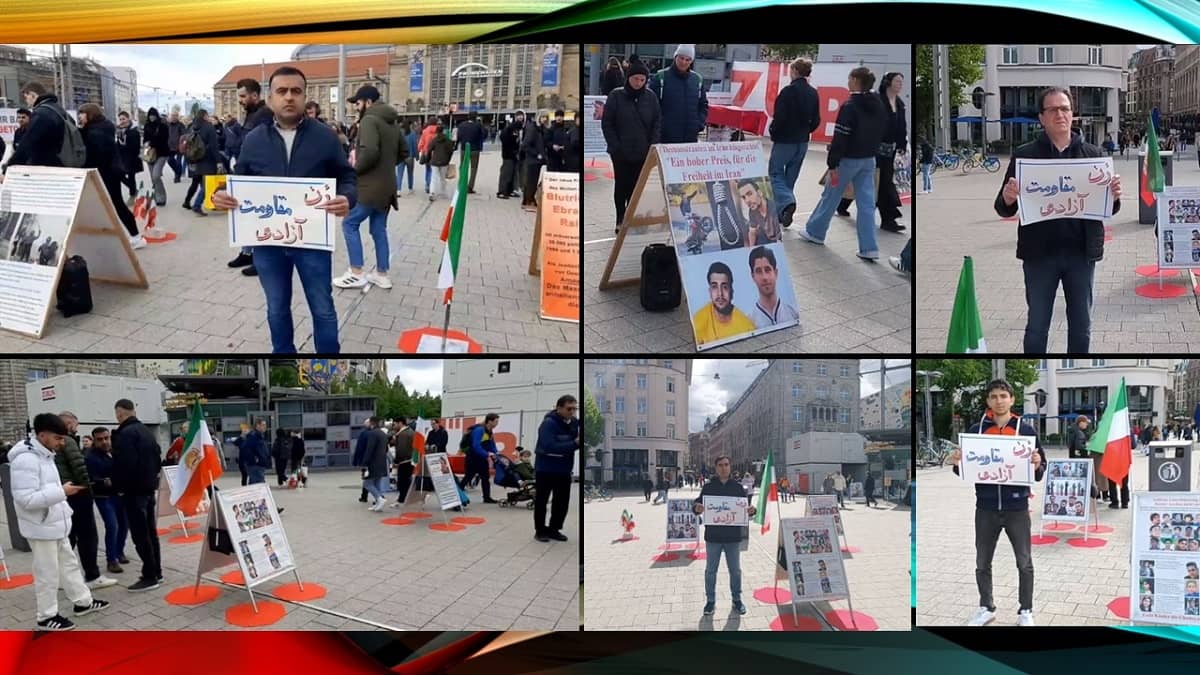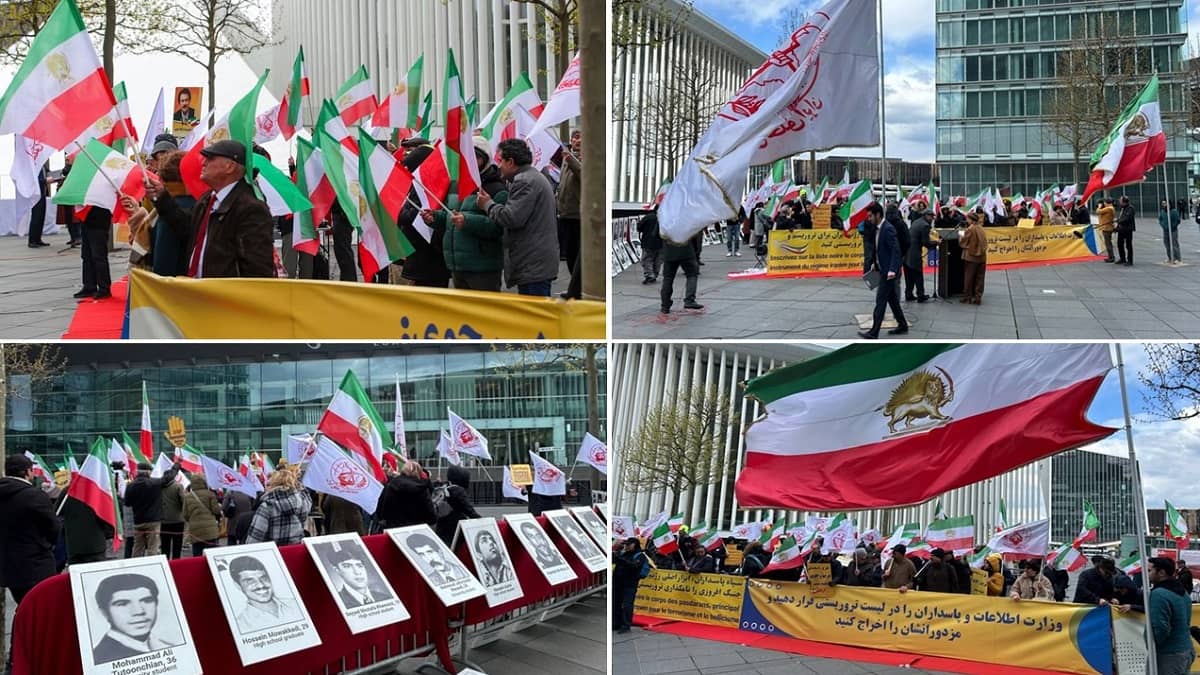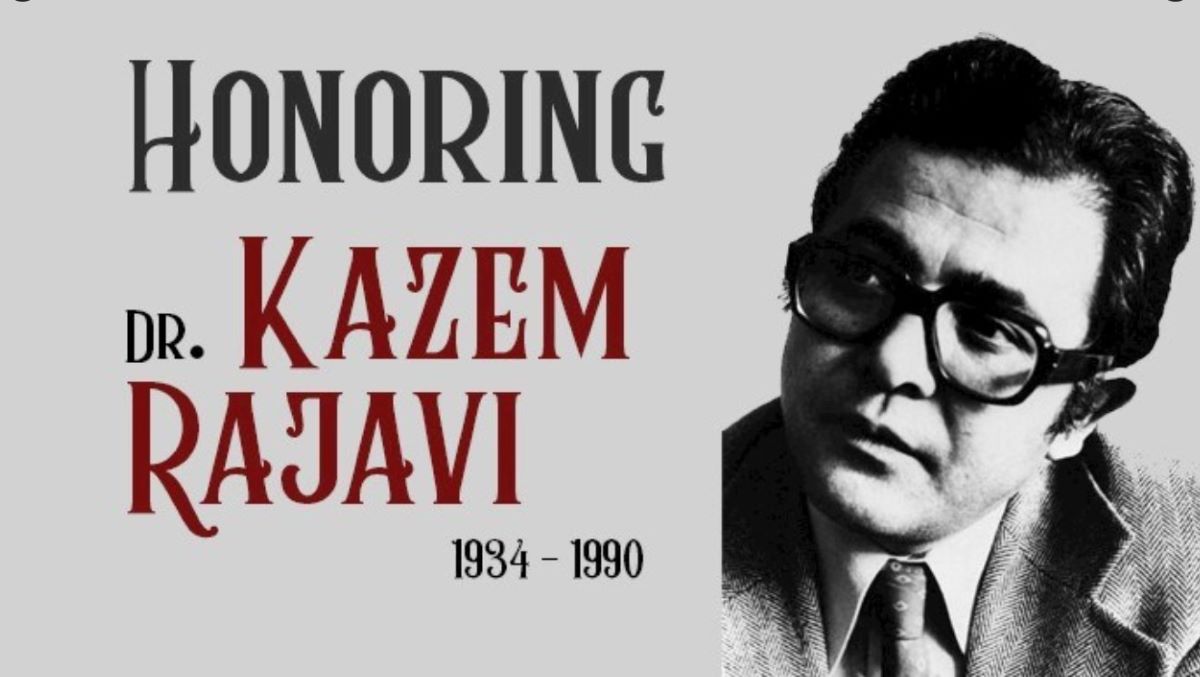Get to Know Iran’s Police Special Units who killed 1,500 people?
By Daniel Mahdavi
On December 15, the National Council of Resistance of Iran (NCRI)announced that 1,500 people had been killed in the November uprising of the Iranian people. On November 23, Reuters quoted a number of Iranian Interior Ministry officials confirming the NCRI’s statistics.
In this report, we dig into who are the suppressive forces of the Iranian regime are killed the protesters.
The Iranian regime’s oppressive forces that participated in the suppression of the recent Iranian people’s protests are from various sectors.
The Law Enforcement Force and counter-insurgency guards alone are incapable of dealing with angry protesters. Although the police resort to violence against protesters.
The second force is the Revolutionary Guards Corps (IRGC), who enjoy a green light in killing people. The IRGC is composed of various departments, such as plainclothes agents and the paramilitary Basij.
However, the main repressive branch of the Iranian regime’s forces that killed and suppressed the people is the Iranian Police Special Units.
NOPO, officially standing for the Special Counter-terrorism Force, is a riot police unit. Special police forces are organized into three units, namely the Imam Khomeini, Amir al-Momenin, and Musa bin Jafar units. NOPO forces are a subset of the Amir al-Momenin unit. NOPO units are seen in black uniforms and vehicles.
The Iranian Police Special Units itself was under the command of the IRGC. At the outset of the Revolutionary Committees it was under the IRGC, which was often the most radical and violent unit of the IRGC. At the beginning of the formation of this force from the so-called Revolutionary Committees, it was called the IRGC Special Units, often being the most radical and violent branch of the IRGC.
The Revolutionary Committees at that time were a repressive force that interfered with the most private part of people’s lives. After 1981, the force that mostly arrested, tortured and killed people were patrols known as “Thar-Allah” and “Jund-Allah”.
During the 1980s Iran-Iraq war, most of the Revolutionary committees formed a division called the brigade of Musa-bin-Jafar. The commander of this brigade was a man named Mojtaba Abdullahi. The same man later combined the two brigades of Musa-ibn-Jafar and the Brigade of Qawamin to establish the 28th Ruhollah Division and was commander of the same division for several years.
After the Iran-Iraq war, the Iranian regime decided to combine the police and gendarmerie units into the Law Enforcement Force. Branches of the 28 Division of Ruhollah and Brigade of Musa-bin-Jafar also formed the Iranian Police Special Units. Mojtaba Abdullahi took command of the Iranian Police Special Units.
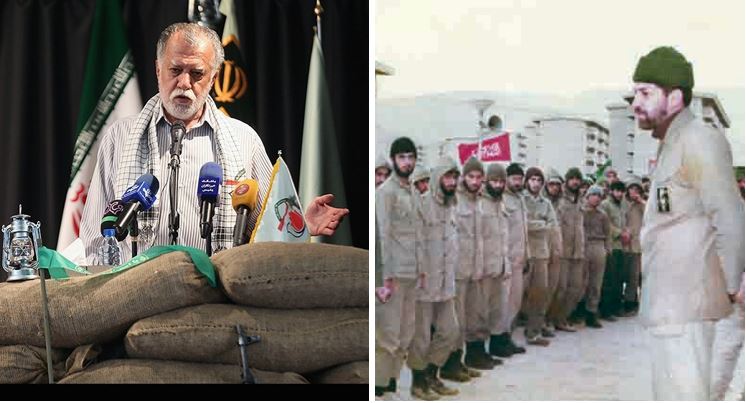
Mojtaba Abdullahi was the special unit commander for 21 years and a trusted confidant of Iranian regime supreme leader Ali Khamenei.
In all the protests of recent years, the entry of Iranian Police Special Units members has been equal to the violent suppression of protesters. This is especially true in a situation where the regime cannot stop the anger of the people.
Since the 1990’s, the Iranian Police Special Units have gained a unique place among the regime’s suppressive forces. In June 1992, when the people of Mashhad, Arak, Mobarakeh (in Isfahan) and Chahardangeh (in Tehran Province) held numerous demonstrations, this force was dispatched for the first time and its units crushed the people of Tollab alley in Mashhad through the most violent methods.
Two years later, in 1994, the special unit again demonstrated its brutality during the Qazvin uprising. oppressive units, They killed between 5,000 and 7,000 people in Qazvin, far more than any other atrocities by other oppressive units.
A year later, the drivers’ uprising in Eslamshahr was another test for the special units in which they also brutally suppressed the uprising. Afterwards, the regime began further dispatching these special units to suppress demonstrations.
In 1999, the Revolutionary Guards called on then president Mohammad Khatami to suppress the nationwide college student demonstrations. Khatami replied, “Round them up but units should be without uniforms.” The Revolutionary Guards went on to kill dozens of students by hiring Iranian Police Special Units who appeared in plainclothes. They threw protesters students down from tall buildings and apprehended many others. Their whereabouts remain a mystery today. In 2009 and following the presidential election that led to a massive popular uprising, the regime extensively used special unit to suppress the people. This was in addition to the Basij, and organizational forces of the IRGC and the police.
The Iranian Police Special Units were again the core of crackdown measures against protesters during large-scale popular and anti-government protests in about one hundred cities in 2017 – and in protests through the course of 2018,. However, these repressions were not comparable to the suppression of the 2019 November protests.
Commanders of these forces claim that the Iranian Police Special Units are not equipped with firearms. This is a lie and Special unit equipped with advanced weapons were ordered to suppress protesters as quickly as possible.
In the November uprising, with more than 1,500 killed and 4,000 wounded, the main suppressive forces involved included Special Units and plainclothes agents equipped with a variety of automatic weapons
In the early days of the November protests, they basically targeted people in the head and chest areas a with sniper rifle from the top of buildings. In the following days, they used machine guns, as they did in Mahshahr, and in some areas, such as Shiraz, authorities used helicopters and armored vehicles in Khorramshahr.
Each of Iran’s 31 provinces has its own special unit coordinated operationally with the provincial police commander In terms of training and general command, they are under the supervision of the Central Special Unit.
The Iranian regime has never announced the numbers of Iranian Police Special Units. Most of them, however, are based in Tehran due to the capital’s political significance and usually the main demonstrations in the last two decades have taken place in Tehran and surrounding areas.
Iranian Police Special Units weapons:
Heckler & Koch G3: This weapon, armed with 7.62 x 51mm bullets, is extremely accurate, especially in single-shot mode. This weapon is now one of the main special unit arms due to as it is equipped with a 4x magnification camera.
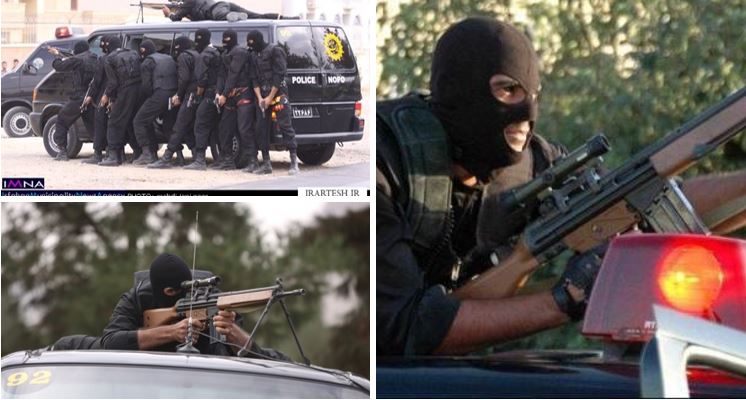
Automatic and semi-automatic weapons: The most common type of weapons in the hands of Special Units members are organizational automatic and semi-automatic weapons. Weapons with a variety of caliber capabilities (over 6mm) commonly used for firing like the bullets, such as the AK-47 Kalashnikov assault rifle and the MP5.
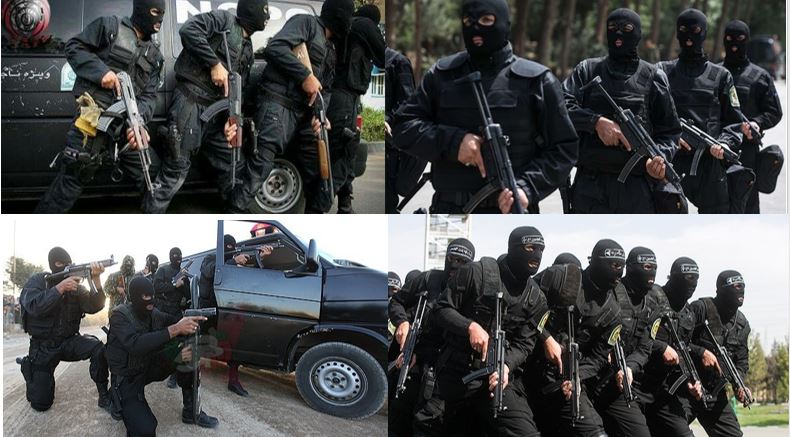
The Iranian Police Special Units also has lumbar weapons. The most common are the Raad and Zaaf pistols, both produced domestically by the regime’s defense industry while copied from the Western version.
Light Weapon / One-shotgun: One of the special weapons widely used during to suppress recent protests was the Flobert single-shot and light weapon. This weapon, fires a low-caliber (usually 2mm) ball or cone bullets.
Shotgun Weapon: These shotguns have come into two types: low and high power. The ammunition used in these weapons are capsules filled with small pellets fired at high pressure. The powerful ammunition disrupts the target from close range.
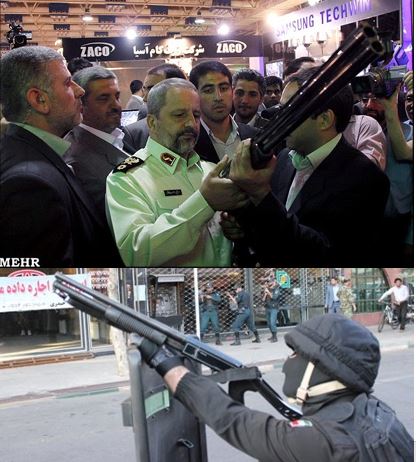
Heavy machine guns: In a number of videos released from the November protests in Mahshahr, high-caliber machine guns (Dushka) were installed behind pickup trucks in the city. Machine guns were been used against protesters who fled to marshland areas where they sought to take cover.
Mahshahr, southwest #Iran
— People's Mojahedin Organization of Iran (PMOI/MEK) (@Mojahedineng) December 3, 2019
Footage of the mullahs' vicious killing spree in this city.
Voice heard saying, "Viva the youth of Jarahi," referring to a district in Mahshahr. Reports indicate the IRGC killed 40 to 100 locals, and possibly more.#IranProtestspic.twitter.com/HzJu1EVVR4
Typical machine guns can be up to 20-50mm caliber. Common types of machine guns can fire from 500 to 1,000 bullets per minute and have high destruction potential.


